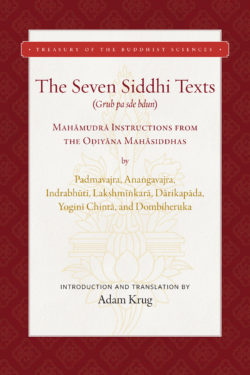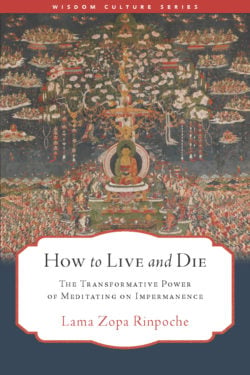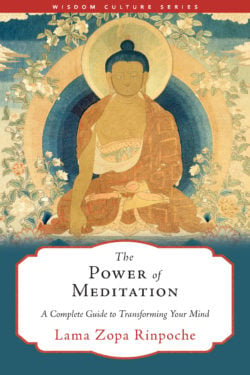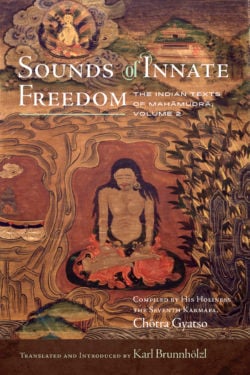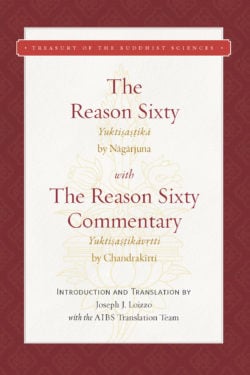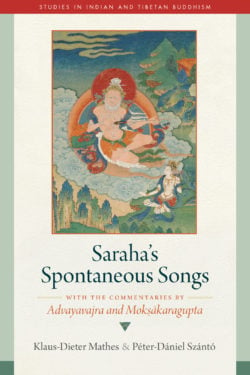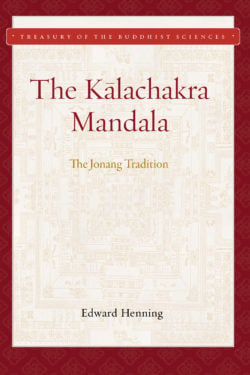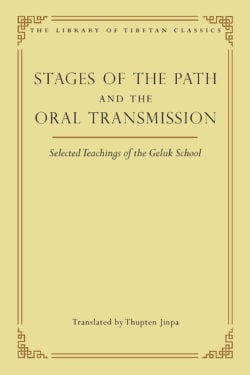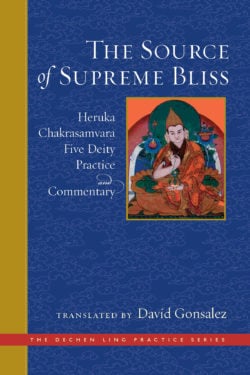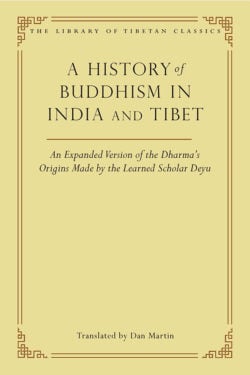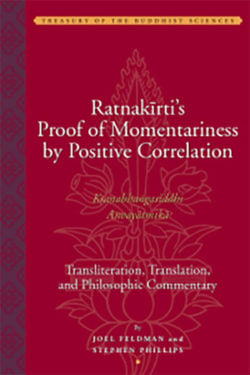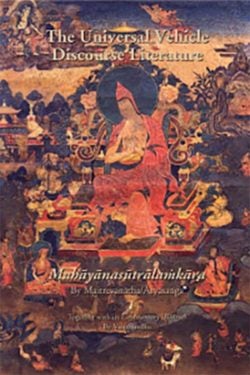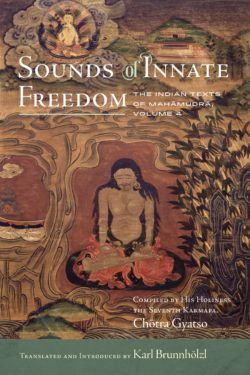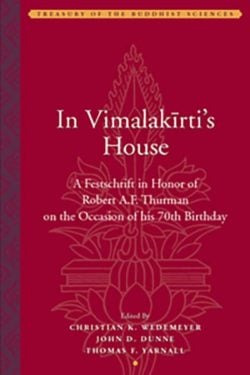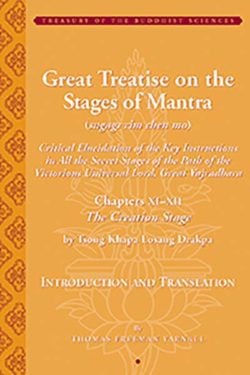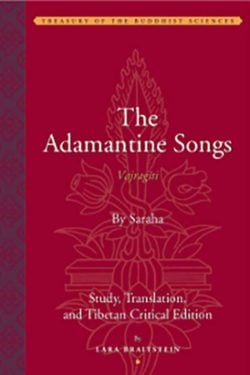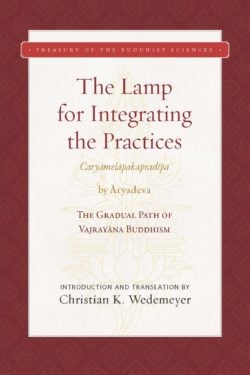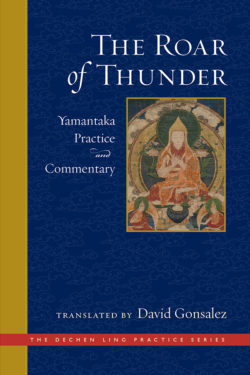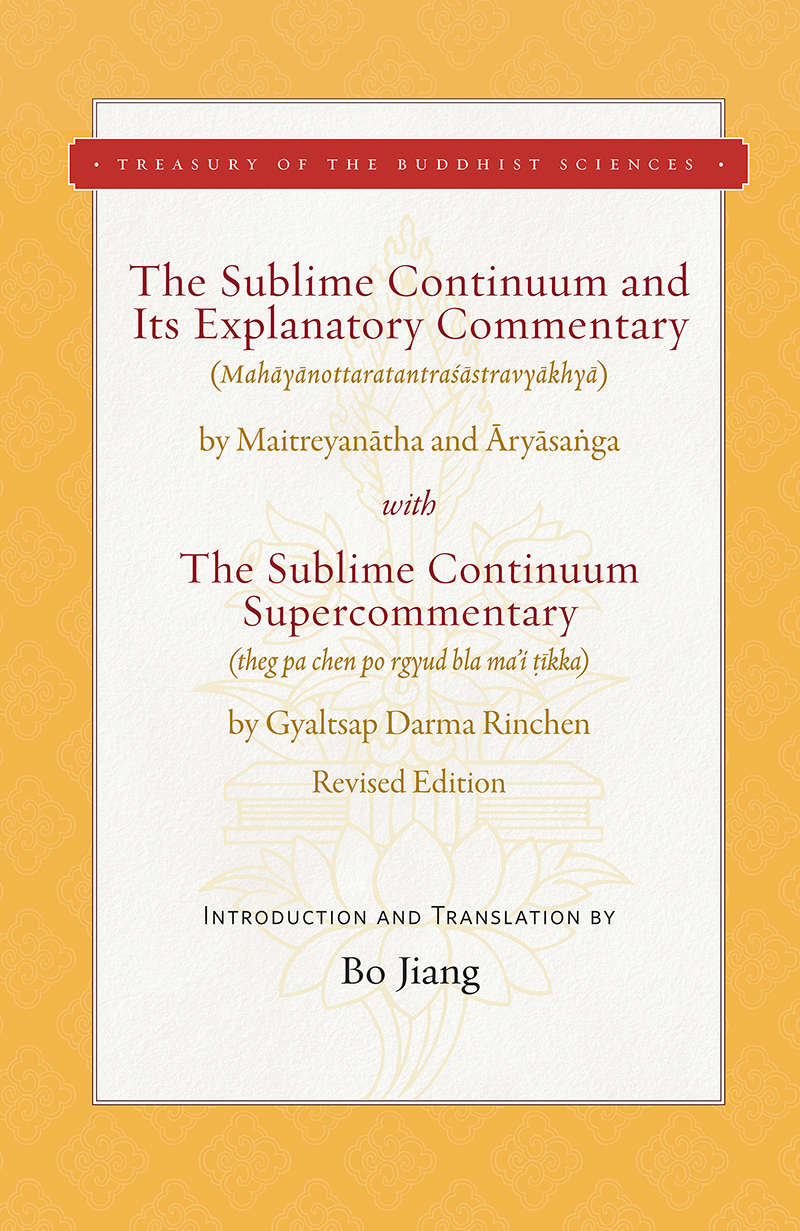
THE SUBLIME CONTINUUM AND ITS EXPLANATORY COMMENTARY
The original Sublime Continuum Explanatory Commentary was written by Noble Asanga to explain the verses received from the bodhisattva Maitreya in the late fourth century CE in northern India. Here it is introduced and presented in an original translation from Sanskrit and Tibetan, with the translation of an extensive Tibetan Supercommentary by Gyaltsap Darma Rinchen (1364–1432), whose work closely followed the view of his teacher, Tsong Khapa (1357–1419).
Contemporary scholars have widely misunderstood the Buddhist Centrist (Madhyamaka) teaching of emptiness, or selflessness, as either a form of nihilism or a radical skepticism. Yet Buddhist philosophers from Nagarjuna on have shown that the negation of intrinsic reality, when accurately understood, affirms the supreme value of relative realities. Gyaltsap Darma Rinchen, in his Supercommentary, elucidates a highly positive theory of buddha nature, showing how the wisdom of emptiness empowers the compassionate life of the enlightened, as it is touched by its oneness with the truth body of all buddhas. With his clear study of Gyaltsap’s insight and his original English translation, Bo Jiang completes his historic project of studying and presenting these works from Sanskrit and Tibetan in both Chinese and, now, English translations, in linked publications.
- Hardcover
- 624 pages, 6 x 9 inches
- $79.95
- ISBN 9781949163247
- eBook
- 624 pages
- $53.99
- ISBN 9781949163308
“By presenting a clear translation of Maitreyanātha’s Sublime Continuum together with the masterful commentaries by Asaṅga and Gyaltsap Darma Rinchen, Bo Jiang does the world of Buddhist Studies and the community of Buddhist practitioners a great service. We should all be grateful.”—Jay Garfield, Director of the Logic Program and of the Five College Tibetan Studies in India Program at Smith College
“We are fortunate to be the recipients of Marty Bo Jiang’s masterful English and Chinese translations of Maitreyanātha’s Sublime Continuum along with the commentaries by Asaṅga and Gyaltsap. His excellent scholarship and translation work have made these texts available to billions of Anglophone and Sinophone readers.”—David B. Gray, Bernard J. Hanley Professor of Religious Studies, Santa Clara University
“Gyaltsap’s Tibetan commentary is a comprehensive fifteenth-century commentarial work on the Uttaratantra and its commentary by Asaṅga that offers a Geluk interpretation of the Indic treatises. Bo Jiang makes Gyaltsap’s commentary available in English for the first time thereby making a valuable contribution to the study of the Tibetan commentarial literature on the Uttaratantra."—Tsering Wangchuk, Blum Chair in Himalayan Studies at the University of San Francisco
“This volume is a testament to the richness and creativity of Buddhist traditions in India and Tibet and expands our appreciation not only of the import of the Tathāgata Essence (tathāgatagarbha), but also of the dialecticist Centrist (prāsaṅgika-madhyamaka) view.”—Douglas Duckworth, Professor of Religion, Temple University
Discover More
The Seven Siddhi Texts
The first English-language translation (with rich historical introduction and extensive annotation) of a key group of Indian Buddhist tantric texts that have had profound influence on the Tibetan Buddhist tradition.
The Seven Siddhi Texts is a key collection of Indian Buddhist tantric exegetical treatises that have shaped the interpretation of unexcelled yoga tantra and Mahāmudrā (Great Seal) practice in Tibet from the eighth century ce to the present. The scholar-yogi authors of these seven texts—drawing upon their scriptural knowledge and personal insight—clarify the intended meanings underlying cryptic, seemingly antinomian passages in root tantras such as the Esoteric Community Tantra (Guhyasamāja-tantra) pertaining to sex, violence, and magical powers, which have proved controversial for many traditional and modern scholars. These seven treatises come from the famed mahāsiddha (great adept) tradition, which often defied the rigid social, religious, and gender norms of premodern India in quest of nondual wisdom. The translator’s introduction places the collection in its Indian sociohistorical context, traces its reception in Tibetan Mahāmudrā practice lineages, and addresses modern misinterpretations. As a window into the earliest Indian Buddhist tantric communities, the Seven Siddhi Texts is a treasure for both practitioners and scholars of these increasingly popular subjects.
This volume is part of the Treasury of the Buddhist Sciences series, copublished by the American Institute of Buddhist Studies (AIBS) and Wisdom Publications in association with the Columbia University Center for Buddhist Studies and Tibet House US. You can learn more about the series here.
How to Live and Die
What death is, how we die, what minds we need at death and what happens after death—only by knowing about death and rebirth can we actually fully understand what life is and so learn how to live fully.
—Lama Zopa Rinpoche
There is arguably no truth more foundational to Buddhism than this: everything is impermanent. We can see this in the world all around us; old systems break down, relationships change. Death comes for those we love and, inevitably, for us.
In this book, the late, beloved teacher Lama Zopa Rinpoche walks us through the traditional, revelatory practices of meditating on the fact of impermanence and even—especially—on death itself. Rather than shy away from this reality, we look straight at it, and thus we learn not only how to not fear death, but how to live.
The Power of Meditation
What is meditation, and how do we practice it?
In The Power of Meditation, Lama Zopa Rinpoche, beloved teacher and co-founder of the Foundation for the Preservation of the Mahayana Tradition, offers clear explanations and instructions for the life-changing practice of meditation.
From preparatory procedures, such as selecting a space and adopting the proper motivation, to the details of posture and how to focus the mind, Rinpoche offers step-by-step instruction that serves as both a starting point for beginners and a new vantage on familiar techniques for more experienced sitters. In his own direct and plain-spoken style, Rinpoche offers concise explanations for different kinds of meditation, such as shamatha, or calm abiding meditation, and vipashyana, or insight meditation, delineating their specific techniques and applications. And finally, Rinpoche presents tips for bringing our newfound clarity off of the cushion and into our daily lives, making each moment meaningful.
The Wisdom Culture Series, published under the guidance of Lama Zopa Rinpoche, provides English-language readers with key works for the study and cultivation of the Mahayana Buddhist path, especially works of masters within the lineage of Lama Tsongkhapa and the Geluk school of Tibetan Buddhism.
Sounds of Innate Freedom, Vol. 2
The second volume in a historic six-volume series containing many of the first English translations of the classic mahāmudrā literature compiled by the Seventh Karmapa.
Sounds of Innate Freedom: The Indian Texts of Mahāmudrā are historic volumes containing many of the first English translations of the classic mahāmudrā literature. The texts and songs in these volumes constitute the large compendium called The Indian Texts of the Mahāmudrā of Definitive Meaning, compiled by the Seventh Karmapa Chötra Gyatso (1456–1539). Translated, introduced, and annotated by Karl Brunnhölzl, acclaimed senior teacher at the Nalandabodhi community of Dzogchen Ponlop Rinpoche, the collection offers a brilliant window into the richness of the vast ocean of Indian mahāmudrā texts cherished in all Tibetan lineages, particularly in the Kagyü tradition, giving us a clear view of the sources of one of the world’s great contemplative traditions.
This volume 2 (thirty-four texts) contains two long-established sets of Mahāmudrā works: “The Sixfold Pith Cycle” and short texts of Maitrīpa’s “Twenty-Five Dharmas of Mental Nonengagement,” which present a blend of Madhyamaka, Mahāmudrā, and certain tantric principles, as well as two commentaries by Maitrīpa’s students. The vital focus of this volume is the accomplishment of true reality.
Click here to explore other volumes available in The Sounds of Innate Freedom series.
The Reason Sixty
The Reason Sixty: Second Edition presents two key Indian Buddhist philosophical masterpieces that integrate the Buddhist ethos of wisdom and compassion, with their profound relevance to contemporary thought clarified by a renowned scholar of contemplative science.
This volume contains English translations of two critical treatises of the Middle Way (Madhyamaka) Buddhist philosophical school: the Reason Sixty, by the most important of Indian thinkers Nāgārjuna (2nd century CE), and the commentary by his most influential successor, Chandrakīrti (7th century CE). These two treatises emphasize the non-foundationalist reasoning for which Madhyamaka thought is famed, here within the context of that quintessential Buddhist topic, universal compassion, thereby illuminating the nondual nature of these two fundamental components of Indian Buddhist thought. The full import of Nāgārjuna’s verses are brought to life by Chandrakīrti, whose influence in Tibetan Buddhist educational institutions remains profound to the present. Translator Joseph Loizzo, a Harvard-trained psychiatrist and Columbia-trained Buddhologist, elucidates the relevance of these two treatises to the linguistic turn in contemporary philosophy and emphasizes their practical, therapeutic possibilities. Comparing in particular the deep resonances between Chandrakīrti’s commentary and Wittgenstein’s later work, Loizzo presents a masterful analysis in cross-cultural thought that highlights the transformative potential of philosophy.
This volume is part of the Treasury of the Buddhist Sciences series, copublished by the American Institute of Buddhist Studies (AIBS) and Wisdom Publications in association with the Columbia University Center for Buddhist Studies and Tibet House US. You can learn more about the series here.
Saraha’s Spontaneous Songs
“Completely abandon thought and no-thought, and abide in the natural way of a small child.” —Saraha
To find liberation and realize the true nature of reality, the Indian Buddhist master Saraha says we must leave behind any conceptual assessment of reality, since no model of it has ever been known to withstand critical analysis. Saraha’s spontaneous songs, or dohās, represent the Buddhist art of expressing the inexpressible. The most important collection of Saraha’s songs is the Dohākoṣa, the Treasury of Spontaneous Songs, better known in Tibet as the Songs for the People, and the Tibetan mahāmudrā tradition, especially within the Kagyü school, has done the most to preserve the lineage of Saraha’s instructions to the present day.
But Saraha was also widely cited in Indian sources starting around the eleventh century, and one Indic commentary, by the Newar scholar Advayavajra, still exists in Sanskrit. In addition, we have independent root texts of Saraha’s songs in the vernacular Apabhraṃśa in which they were recorded. These Indian texts, together with their Tibetan translations, are here presented in masterful new critical editions, along with the Tibetan translation of the commentary no longer extant in Sanskrit by Mokṣākaragupta. Finally, both commentaries are rendered in elegant English, and the authors offer a brisk but comprehensive introduction.
Saraha’s Spontaneous Songs provides the reader with everything needed for a serious study of one of the most important works in the Indian Buddhist canon.
Learn more about the Studies in Indian and Tibetan Buddhism series.
The Kālachakra Mandala
A detailed, beautifully illustrated presentation of the construction and symbolism of the famed Kālachakra mandala, the crown jewel of the Indo-Tibetan tantric traditions.
This volume contains an extensive analysis of the construction and symbolism of the mandala of the Kālachakra tantric system, the most intricate and explicit of the Indian Buddhist unexcelled yoga tantras, the most advanced teachings within the Indo-Tibetan tradition. Indo-Tibetan tantric traditions, particularly the unexcelled category, depend on imagery and visualization for the processes of purifying cyclic existence, and Kālachakra is the most detailed. The late scholar-practitioner Edward Henning, one of the earliest Western specialists on this material, offers this labor of love as a testament to the genius of the Tibetan tradition in preserving and transmitting these teachings over a thousand years. Well known internationally now due to the Dalai Lama’s many public initiations, the Kālachakra mandala serves as a primary focal point for meditators both new and seasoned. Henning draws primarily from the Jonang tradition of Kālachakra practice, particularly the modern master Banda Gelek, to elucidate and clarify inconsistencies across traditions and literature, including the authoritative Indian commentary Stainless Light (Vimalaprabhā), regarding the construction and visualization of the three-tiered mandala with its hundreds of deities. In addition to providing detailed information on the images to be visualized, Henning provides in the final chapter a clear and extensive explanation of the symbolism of the habitat and inhabitants that are to be animated during the meditation session. An excellent companion to the translations of the Kālachakra Tantra and Stainless Light chapters co-published by the American Institute of Buddhist Studies and Wisdom Publications, this beautifully illustrated volume is a must-have for scholars and practitioners alike.
Stages of the Path and the Oral Transmission
A major contribution to the literature on Buddhist practice according to the Geluk school of Tibetan Buddhism from its foremost interpreter.
Although it was the last major school to emerge in the Tibetan Buddhist tradition, the Geluk school has left an indelible mark on Buddhist thought and practice. The intellectual and spiritual brilliance of its founder, the great Tsongkhapa (1357–1419), has inspired generations of scholars and tantric yogis to place him at the heart of their daily meditative practice. The Geluk tradition’s close ties to the Dalai Lamas have also afforded it an outsized influence in all aspects of Tibetan life for centuries. At its peak, its combined monasteries boasted a population in the tens of thousands, and its sway encompassed the religious landscape of Mongolia and much of Central Asia.
This widespread religious activity fostered a rich literary tradition, and fifteen seminal works are featured here representing four genres of that tradition. The first are works on the stages of the path, or lamrim, the genre for which the Geluk is most renowned. Second are works on guru yoga, centered around the core Geluk ritual Offering to the Guru (Lama Chöpa). Third are teachings from the unique oral transmission of Geluk mahāmudrā, meditation on the nature of mind. Fourth are the “guide to the view” (tatri) instructions. The volume features well-known authors like Tsongkhapa, the First Panchen Lama, and the Fifth Dalai Lama, but also important works from lesser-known figures like Gomchen Ngawang Drakpa’s stages of the path in verse and Gyalrong Tsultrim Nyima’s extensive commentary on the Lama Chöpa that interweaves precious explanations from the Ensa Oral Tradition he received from his own teacher.
Your guide to these riches, Thupten Jinpa, maps out their historical context and spiritual significance in his extensive introduction.
Learn more about the Library of Tibetan Classics
Learn about becoming a benefactor of the Library of Tibetan Classics
The Source of Supreme Bliss
The Source of Supreme Bliss contains the first English translations of important commentaries on the Highest Yoga Tantra system of the Heruka Chakrasamvara five deity practice.
Included is a lucid, practical, and deeply profound explanation of the generation stage by Ngulchu Dharmabhadra. This is followed by an extremely rare and profound commentary by the First Panchen Lama Losang Chökyi Gyaltsen on the completion stage, along with a commentary on how to perform a proper Chakrasamvara retreat. The second half of the book comprises translations of the ritual texts associated with the commentaries.
Indispensable for anyone who undertakes this practice, The Source of Supreme Bliss will also provide rich and profound insights for those interested in Highest Yoga Tantra.
The Dechen Ling Practice Series from Wisdom Publications is committed to furthering the vision of David Gonsalez (Venerable Losang Tsering) and the Dechen Ling Press of bringing the sacred literature of Tibet to the West by making available many never-before-translated texts.
A History of Buddhism in India and Tibet
The first complete English translation of an important thirteenth-century history that sheds light on Tibet’s imperial past and on the transmission of the Buddhadharma into Central Asia.
Translated here into English for the first time in its entirety by perhaps the foremost living expert on Tibetan histories, this engaging translation, along with its ample annotation, is a must-have for serious readers and scholars of Buddhist studies. In this history, discover the first extensive biography of the Buddha composed in the Tibetan language, along with an account of subsequent Indian Buddhist history, particularly the writing of Buddhist treatises. The story then moves to Tibet, with an emphasis on the rulers of the Tibetan empire, the translators of Buddhist texts, and the lineages that transmitted doctrine and meditative practice. It concludes with an account of the demise of the monastic order followed by a look forward to the advent of the future Buddha Maitreya.
The composer of this remarkably ecumenical Buddhist history compiled some of the most important early sources on the Tibetan imperial period preserved in his time, and his work may be the best record we have of those sources today. Dan Martin has rendered the richness of this history an accessible part of the world’s literary heritage.
Learn more about the Library of Tibetan Classics
Learn about becoming a benefactor of the Library of Tibetan Classics
Ratnakīrti’s Proof of Momentariness by Positive Correlation (Kṣaṇabhaṇgasiddhi Anvayātmikā)
The Kṣaṇabhaṇgasiddhi is a masterpiece of skillful reasoning by the eleventh-century Indian Buddhist philosopher Ratnakīrti. This renowned scholar taught at the great Buddhist University of Vikramaśīla and was a master of almost every classical philosophical school that preceded him.
The present work is informed by centuries of debate between Buddhist advocates of momentariness and archrival Nyāya philosophers who believed that both selves and things endure.
This book is the first published translation of Ratnakīrti’s proof based on positive correlations, and includes a commentary explaining each step of his reasoning.
The Universal Vehicle Discourse Literature (Mahāyānasūtrālaṁkāra)
The Universal Vehicle Discourse Literature (Mahāyānasūtrālaṃkāra) was transmitted from the bodhisattva Maitreyanātha to Āryā Āsaṅga, the fourth-century Indian Buddhist scholar-adept. The most foundational of the set of the famous Five Teachings of Maitreya, the Discourse Literature is considered the wellspring of what the Tibetans call the “magnificent deeds trend of the path,” the compassion side, which balances the “profound view trend of the path,” the wisdom side. The Discourse Literature is also considered to be metaphysically aligned with and foundational for the Idealist (Vijñānavādin) school of Mahāyāna thought. Translated from Sanskrit, Tibetan, and Chinese by Lobsang Jamspal, Robert Thurman, and the AIBS team, the present work contains a fully annotated, critical English rendition of the Discourse Literature along with its commentary (bhāṣya) by Āsaṅga’s brother, Vasubandhu. It also includes an introduction covering essential historical and philosophical topics, a bibliography, and a detailed index. This long-awaited work is the founding cornerstone of the AIBS Treasury of the Buddhist Sciences series.
Sounds of Innate Freedom, Vol. 4
Sounds of Innate Freedom: The Indian Texts of Mahāmudrā are historic volumes containing many of the first English translations of classic mahamudra literature. The texts and songs in these volumes constitute the large compendium called The Indian Texts of the Mahāmudrā of Definitive Meaning, compiled by the Seventh Karmapa, Chötra Gyatso (1456–1539). The collection offers a brilliant window into the richness of the vast ocean of Indian mahamudra texts cherished in all Tibetan lineages, particularly in the Kagyü tradition, giving us a clear view of the sources of one of the world’s great contemplative traditions.
Besides the individual dohās (couplets), vajragītis (vajra songs), and caryāgītis (conduct songs) in this second volume in publication, the three extensive commentaries it contains brilliantly unravel enigmas and bring clarity not only to the specific songs they comment on but to many other, often cryptic, songs of realization in this collection. These expressive songs of the inexpressible offer readers a feast of profound and powerful pith instructions uttered by numerous male and female mahāsiddhas, yogis, and ḍākinīs, often in the context of ritual gaṇacakras and initially kept in their secret treasury. Displaying a vast range of themes, styles, and metaphors, they all point to the single true nature of the mind—mahāmudrā—in inspiring ways and from different angles, using a dazzling array of skillful means to penetrate the sole vital point of buddhahood being found nowhere but within our own mind. Reading and singing these songs of mystical wonder, bliss, and ecstatic freedom, and contemplating their meaning, will open doors to spiritual experience for us today just as it has for countless practitioners in the past.
Click here to explore other volumes available in The Sounds of Innate Freedom series.
In Vimalakīrti’s House
Over the course of nearly half a century, Robert A. F. Thurman has left an indelible mark on numerous fields of study, including Buddhist literature, Tantric Buddhism, Tibetan studies, and the comparative sciences of mind. To celebrate his seventieth birthday, Thurman’s students and colleagues have come together to pay tribute to these contributions and to Thurman’s ongoing leadership in these fields by assembling a collection of essays of their own that extend and supplement his groundbreaking research.
In Vimalakīrti’s House is the result of this collaboration and represents a broad spectrum of cutting edge studies in areas central to Thurman’s own scholarly project. The resulting volume is itself a kind of “treasury of the Buddhist sciences,” insofar as its authors explore wide-ranging problems in art, literature, epistemology, history, ritual, buddhology, and lexicography.
Great Treatise on the Stages of Mantra (Sngags rim chen mo)
Tsong Khapa’s Great Treatise on the Stages of Mantra (Sngags rim chen mo)—considered by the present Dalai Lama to be one of Tsong Khapa’s two most important books (along with his Lam rim chen mo)—is his masterful synthesis of the principles and practices of all four classes of Tantra, which formed the basis of his innovation in creating the esoteric “Tantric College” institution and curriculum in the early fifteenth century. With detailed reference to hundreds of works from the Tibetan Kangyur and Tengyur, the chapters presented and studied in this volume concern his treatment of the creation stage (bskyed rim) meditations of Unexcelled Yoga Tantra. This includes a detailed analysis emphasizing how and why such creation stage practices—utilizing deity yoga to transform death, the between, and life into the three bodies of buddhahood are indispensible to creating a foundation for successfully entering the culminal yogic practices of the perfection stage. (A subsequent volume will present the perfection stage chapters of this essential masterwork.)
An important work for both scholars and practitioners, this annotated translation is supplemented with extensive support materials.
The Adamantine Songs (Vajragīti)
Presented here in English for the first time is a set of three of Saraha’s “Adamantine Songs” (Skt. Vajragīti; Tib. rdo rje’i glu), poetic works that play a central role in the Great Seal (mahāmudrā) tantric tradition of both India and Tibet. The tantric adept (siddha) Saraha was among the most notable figures from India’s late first millennium, a time of rich religious and literary activity. His influence on Buddhist practice and poetry extended beyond the Indian subcontinent into Tibet, where it continues to affect every tradition that engages the practice and philosophy of the esoteric Great Seal.
In these songs, Saraha’s views on the nature of mind are presented as both evocative poetry and theoretical exegesis. These songs offer a new perspective on the religious life of Buddhist India and the figure of one of its most famous adepts.
Braitstein opens the door to this important set of texts by Saraha through her elegant translation, critical edition of the Tibetan texts, and in-depth analysis of the three poems. She situates Saraha and his work both in the Tibetan Buddhist sphere and in a broader South Asian literary and religious context, closely treating the central themes in Saraha’s poems, highlighting the specific siddha worldview espoused in his oeuvre, and at the same time unpacking the cryptic references contained in the songs’ individual verses. With this book, Braitstein substantially increases the amount of Saraha’s poetry available to an English-speaking audience and contributes to the ever-increasing movement to explore the culture of the tantric adepts.
The Lamp for Integrating the Practices (Caryāmelāpakapradīpa)
The Lamp for Integrating the Practices (Caryāmelāpakapradīpa) by Āryadeva, is a systematic and comprehensive exposition of the most advanced yogas of the Esoteric Community Tantra (Guhyasamāja-tantra) as espoused by the Noble (Nāgārjuna) tradition, an influential school of interpretation within Indian Buddhist mysticism. Equal in authority to Nāgārjuna’s famous Five Stages (Pañcakrama), Āryadeva’s work is perhaps the earliest prose example of the “stages of the mantra path” genre in Sanskrit. Its systematic path exerted immense influence on later Indian and Tibetan traditions, and it is widely cited by masters from all four major lineages of Tibetan Buddhism.
This volume presents the Lamp in a thoroughly annotated English translation. It includes an introductory study discussing the history of the Guhyasamāja and its exegetical traditions, surveying the scriptural and commentarial sources of the Nāgārjuna tradition, and analyzing in detail the contents of the Lamp. The book also features a detailed, trilingual glossary.
Simultaneously presented online for scholars are a version of its Sanskrit original, critically edited from recently identified manuscripts, and a critical edition of the eleventh-century Tibetan translation by Rinchen Zangpo, including notes on readings found in “lost,” alternative translations.
The Roar of Thunder
An essential collection of texts and instructions for the practice of the wrathful wisdom deity Yamantaka. With pith instructions from famed siddhas and masters of the Gelug school, The Roar of Thunder offers an unprecedented panoramic perspective on the entire spectrum of Yamantaka practice. Also included in this amazing volume is the extensive sadhana of the Solitary Hero composed by Pabongkha Rinpoche that can be used as a reference to facilitate a more thorough understanding of the commentaries.
The Dechen Ling Practice Series from Wisdom Publications is committed to furthering the vision of David Gonsalez (Venerable Losang Tsering) and the Dechen Ling Press of bringing the sacred literature of Tibet to the West by making available many never-before-translated texts.


